
Welcome to CivilGEO Knowledge Base
Welcome to CivilGEO Knowledge Base

Welcome to CivilGEO Knowledge Base
Welcome to CivilGEO Knowledge Base
Profile lines are another way of extracting linear data from a 2D flow area. Profile lines are frequently used to delineate the plot of terrain and computed water surface elevation down the centerline of a channel. Profile lines are also used to plot the time series output. In order to plot time series data for the flow crossing the line, the profile line should be drawn perpendicular to the flow direction left to right looking in the downstream direction.
In GeoHECRAS, the user can create 2D profile lines on the Map View using the Assign Profile Lines and Draw Profile Lines commands. Both commands have similar functionality but somewhat distinct workflows.
Note that these commands can only be used after a successful HEC-RAS analysis run.
The Assign Profile Lines command allows the user to define a profile line from previously imported CAD or GIS data.
Follow the steps below to use the Assign Profile Lines command:
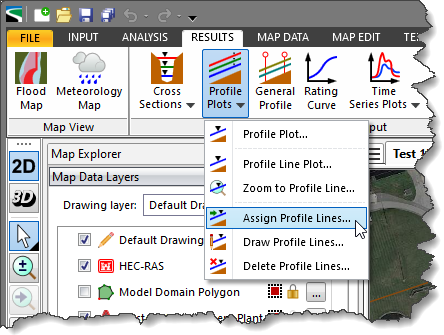
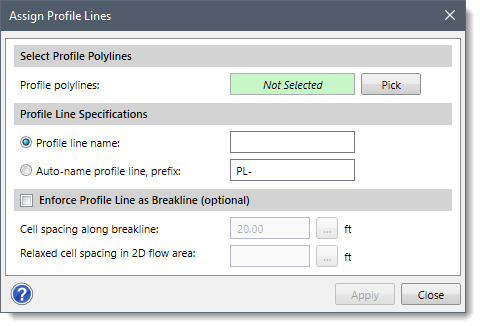
![[Pick] button](https://knowledge.dev.civilgeo.com/wp-content/uploads/sites/25/2024/04/2D-Profile-Lines-Screen-Capture-3.png)
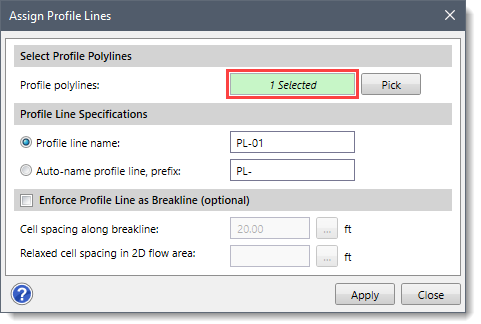 Notes:
Notes:
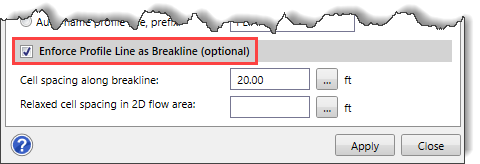 Enforcing a profile line as a breakline helps in the quick reorientation of orthogonal cells around the profile line in order to remove jaggies from a skewed profile line.
Enforcing a profile line as a breakline helps in the quick reorientation of orthogonal cells around the profile line in order to remove jaggies from a skewed profile line.
![[Apply] button](https://knowledge.dev.civilgeo.com/wp-content/uploads/sites/25/2024/04/2D-Profile-Lines-Screen-Capture-6.png)
The Draw Profile Lines command allows the user to manually draw a 2D profile line on the Map View.
Follow the steps below to use the Draw Profile Lines command:
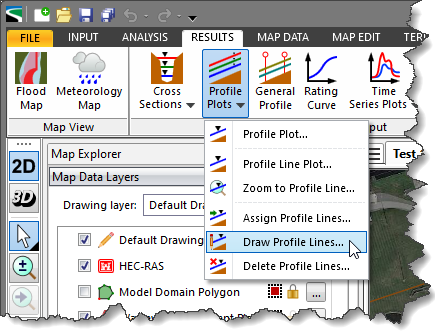
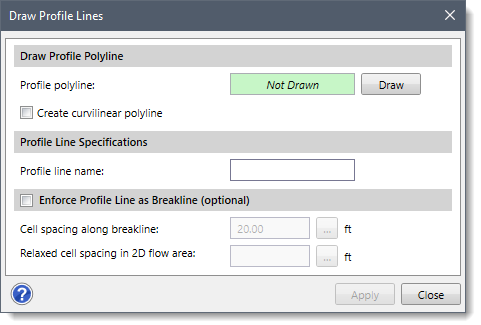
![[Draw] button](https://knowledge.dev.civilgeo.com/wp-content/uploads/sites/25/2024/04/2D-Profile-Lines-Screen-Capture-9.png)
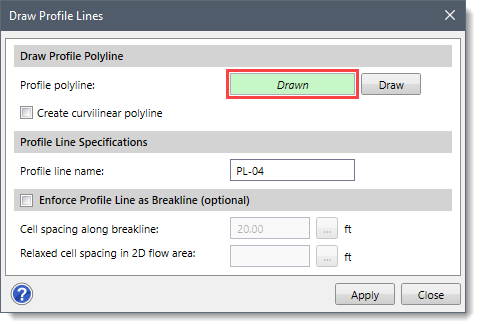
The Profile Line Plot command of the GeoHECRAS software allows the user to view various types of output such as water surface elevation and terrain profile, velocity profile, flow depth profile, etc. along the 2D profile lines.
Follow the steps below to use the Profile Line Plot command.
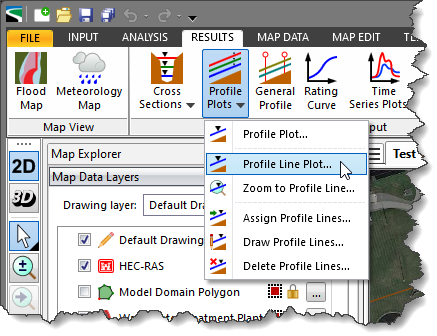
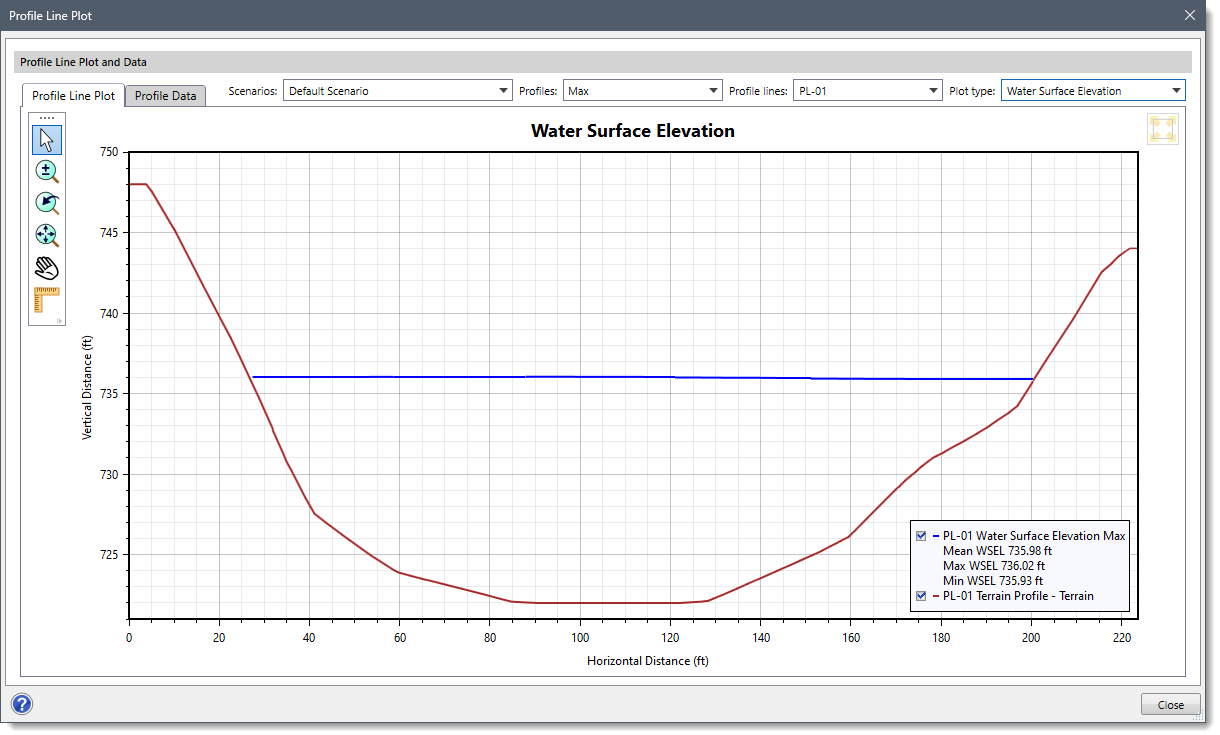
Note that while viewing the water surface elevation profile, the terrain profile is included in the plot for reference.
The following sections describe how to use the Profile Line Plot command and interact with the above dialog box.
The Scenarios dropdown combo box allows the user to view output results from different scenarios. To learn more about working with multiple scenarios, refer to this article in our knowledge base.
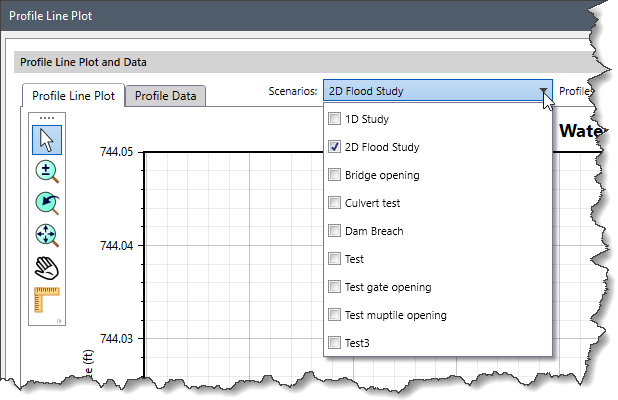
The Profiles dropdown combo box allows the user to view output results for multiple profiles at the same time. By default, the software selects the Max option.
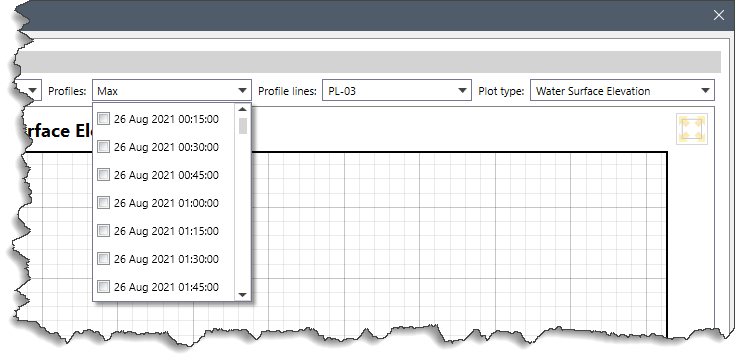
Note that the Profiles dropdown combo box will be disabled, if time series plot types are selected in the Plot type dropdown combo box.
The Profile Lines dropdown combo box allows the user to select the profile line(s) and view their corresponding output results.
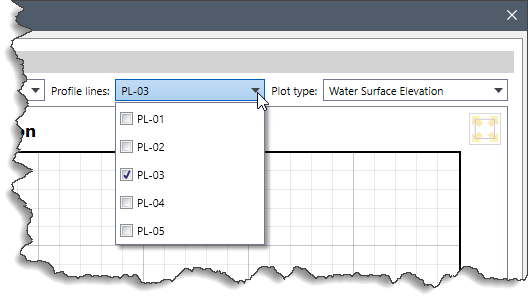
The Plot type dropdown combo box allows the user to select the types of output results to be viewed for the selected profile line(s). The following output results options are listed in the dropdown combo box:
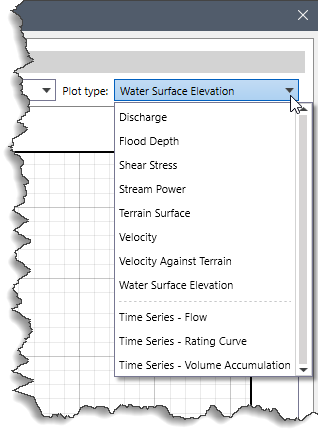
The GeoHECRAS software also allows the user to create professional printouts of profile line plots and to save them as image files as well as export them to PDF files. To print or export the results of a profile line plot into a different format, right-click anywhere on the plot and select the Export to PDF, Save as Image, or Print option.

The Profile Data tab contains a table that displays results associated with the selected profile line(s).
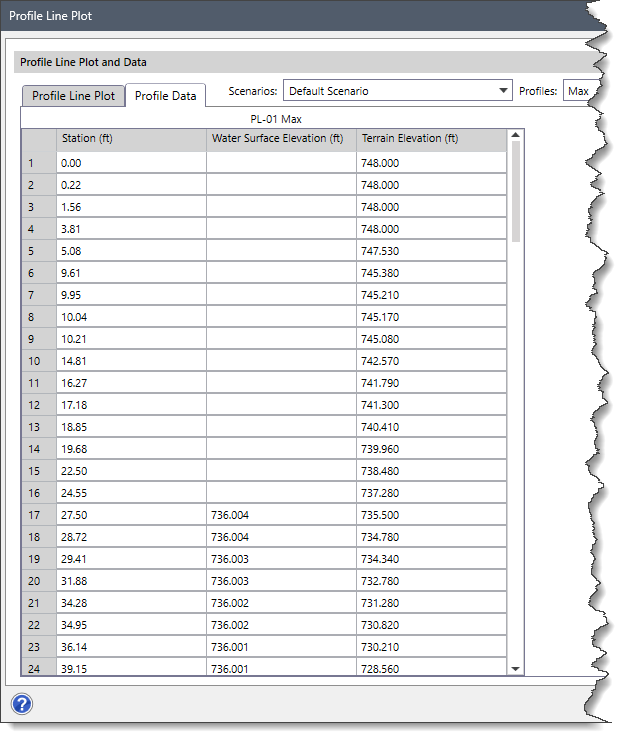
The user can also configure the display properties of profile line plots and their IDs on the Map View. To learn more about this feature, refer to this article in our knowledge base.
 1-800-301-02-955
1-800-301-02-955
 608-729-5100
608-729-5100
(US and Canada)
 [email protected]
[email protected]
 +1 608-729-5100
+1 608-729-5100
CivilGEO India
Graphix Tower, A-13 A
3rd Floor, Sector 62
Noida, Uttar Pradesh 201309
IndiaTel:
1-800-301-02-955 or
+91 022-3831-8601
CivilGEO United States
8383 Greenway Blvd
6th Floor
Middleton, WI 53562
USATel:
608-729-5100 or
800-488-4110
Copyright © CivilGEO, Inc. All rights reserved. The CivilGEO logo, “GeoSTORM”, “GeoHECHMS”, “GeoHECRAS”, and “Ready To Engineer” are registered trademarks of CivilGEO,Inc.
All other brands, company names, product names or trademarks belong to their respective holders.
We use cookies to give you the best online experience. By agreeing you accept the use of cookies in accordance with our cookie policy.
When you visit any web site, it may store or retrieve information on your browser, mostly in the form of cookies. Control your personal Cookie Services here.
The ZoomInfo WebSights snippet drops three cookies to track Unique Visits:
1. _pxhd - Related to the Perimeter X security layer (Perimeter X isused to prevent bot attacks).
2. _cfduid - Related to the CloudFlare security layer (CloudFlare is the Network Security protocol that ZoomInfo uses to orchestrate the rate limiting rules).
3. visitorId - This is how WebSights identifies recurring visitors








